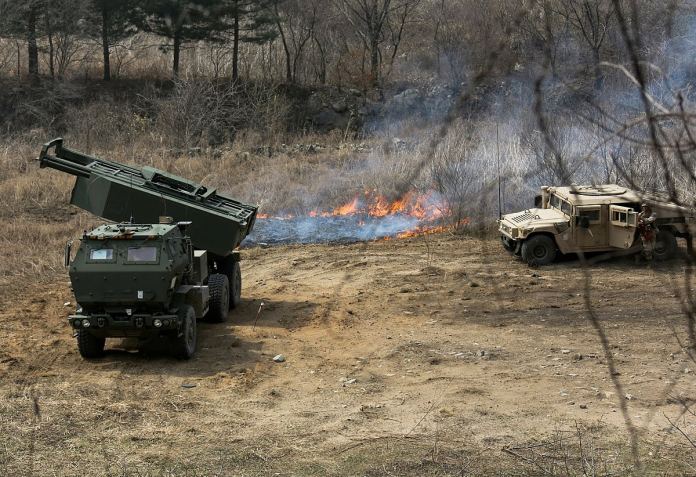The recent destruction of a US-supplied HIMARS rocket system just 30 km from the frontline in Ukraine raised critical questions about shifting tactical priorities and systemic challenges within Kyiv’s military strategy, according to Ukrainian media.
Once reserved for precision strikes deep behind enemy lines, these high-value systems are now increasingly exposed to frontline risks, a move analysts attribute to urgent operational demands and dwindling long-range capabilities.
HIMARS, designed for targeted strikes on logistics hubs, command centres, and ammunition depots, are being thrust into roles they were never intended for: direct fire support to repel advancing forces. Ukrainian troops, grappling with a severe shortage of long-range strike platforms, are now forced to deploy HIMARS closer to the frontline to address immediate tactical needs.
The reflects a broader strain on Ukraine’s reconnaissance-fire complex, which struggles to identify and engage high-value Russian targets at safe distances.
The systems’ vulnerability was starkly highlighted when a HIMARS was destroyed by an FPV drone, a weapon typically limited to short-range engagements. This incident underscores potential failures in Ukraine’s layered defence strategies and the erosion of safety protocols for critical assets.
With each loss, Kyiv’s capacity to disrupt Russian rear-line logistics diminishes, as replenishing these advanced systems is hampered by protracted production cycles and finite allied stockpiles.
Tactical vulnerabilities and escalating risks
Deploying HIMARS near the frontline exposes them to heightened detection by Russian surveillance and rapid counterattacks. Once identified, the systems face relentless artillery barrages or drone strikes.
Experts note that Ukraine’s inability to sustain its long-range strike capacity could lead to a “phased decline” in strategic impact. Without HIMARS’ ability to target supply routes and command nodes, Russian forces may gain greater operational freedom, shifting the momentum on the battlefield.
Compounding this, Ukraine’s reliance on Western ammunition—particularly GPS-guided GMLRS rockets—leaves it dependent on a fragile supply chain, with no domestic production capability for these proprietary systems.
The US now faces a dilemma: accelerate transfers of HIMARS from active-duty units to Ukraine—potentially undermining its own military readiness—or accept that these systems will be relegated to tactical roles, neutering their strategic value. Either scenario risks long-term instability, as Ukraine’s battlefield effectiveness hinges on maintaining precision strike capabilities.
Meanwhile, Russia is capitalising on this vulnerability by intensifying counterbattery operations and pre-emptive strikes on launch sites. The destruction of logistics routes for HIMARS rockets further strains Kyiv’s ability to sustain operations.
